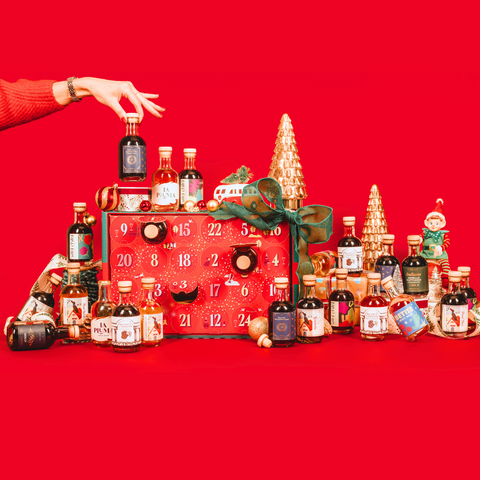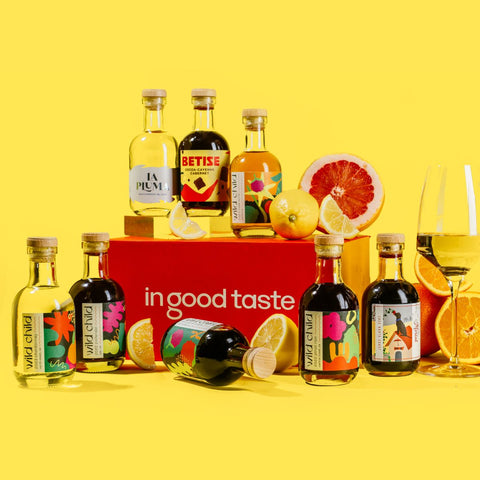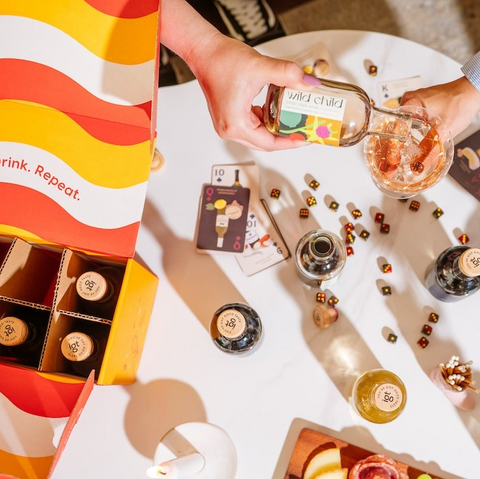It's a Glass Half Full Kind of Day
Many variables play into the wine drinking experience: the setting, the temperature of the wine, the food pairings, and even the type of glass the wine is consumed out of. Does the type of wine glass really affect the wine tasting experience? In short, the answer is yes.
Wine glasses are composed of four parts. The base, which provides stability. The stem, which allows the taster to have something to hold onto. This also prevents us from warming up the wine with our hands and getting those dreaded fingerprints on the glass. Next is the bowl. This is the most important part of the glass. Bowl sizes vary depending on the style of wine, but most wine glasses will taper at the top, which traps all of the aromas released by the wine. Last is the rim, which the taster feels as they are enjoying the wine. All together, the glass can enhance your tasting experience tenfold.

Today, top glassware producers, like Riedel, Zalto, and Schott Zwiesel, have created wine glasses that are designed for specific wines. Claus Josef Riedel is credited with starting this trend in 1958 by developing a wine glass exclusively for Burgundy. He was the first to notice that the taste and smell of the wine could be affected by the shape of glass. As of 2018, Riedel produces around 200 different styles of wine glasses for everything from Bordeaux to Riesling.
It is not only shape that has an effect on the taste of wine but glass thickness as well. In higher-quality glassware, glass tends to be thinner and more delicate. Thinner glasses also have a thinner rim, which allows a more even flow of the wine as it leaves the glass. This allows the taster to focus more on the taste of the wine as opposed to the thickness of the glass.
With all of these options, it can become overwhelming when looking to purchase a set of wine glasses. Let’s break down the differences between red, white, sparkling, and dessert glasses.
Red Wine
Red wine glasses come in a variety of bowl sizes, rim styles, and stem lengths. Traditionally, these glasses will have a larger bowl than white wine glasses. This is to allow the wine, which is usually fuller-bodied than a white wine, to "breathe." The concept of letting a wine breathe involves allowing the wine to come into contact with oxygen. During this process, aromas from the wine start to release for the taster to smell. Red wine glasses can also have a bigger rim, which is, again, to allow more oxygen into the glass and the taster’s mouth.

To add another layer of complexity, there are three common styles of red wine glasses: full-bodied (or Bordeaux), medium-bodied, and light-bodied (or Burgundy). Bordeaux glasses are the biggest glass and allow space between the taster's nose and the wine. This is to allow the ethanol vapors (full-bodied wines tend to have a higher alcohol content) to move out of the glass so that the only notes left are the aromas of the wine. Try drinking Zinfandel, Syrah, Bordeaux, and Cabernet Sauvignon from these glasses.
Medium-bodied glasses are just smaller versions of the Bordeaux glass. They still allow some of the ethanol vapors to escape. These are great for Cabernet Franc, Grenache, and Sangiovese. Finally, the Burgundy wine glasses are for lighter-bodied red wines and have a small bowl shape to allow the aromas of the wine to accumulate in the bowl. Pinot Noir, Gamay, and Frappato benefit from being consumed out of this style of glass.
White Wine and Rosé
Unlike red wine, white wine does not need to breathe as extensively. There are two main types of white wine glasses: one for high-acid white wines (think Riesling) and one for full-bodied white wines (think a white Burgundy). White wine glasses do have a longer stem than other wine glass styles, and that is because white wine is served at a colder temperature. The elongated stem allows extra room for the taster’s hand so that the temperature of the wine will not be affected by body heat.

The high-acid white wine glasses have a smaller opening on top because the ethanol vapors experienced in red wine are far less in these traditionally low ABV wines. The small opening also allows for the acidic nature of these wines to be directed to the perfect spot on your palate (the middle of your tongue). This style of glass is also perfect to enjoy rosé out of as it is typically high-acid, low-alcohol.
The full-bodied white wine-style glass is for wines like oaked chardonnay and white Burgundy, and sweet wines, like Sauternes and off-dry Riesling. The opening on this glass is slightly larger than the high-acid wine glass but still has the elongated stem and smaller bowl shape.
Sparkling Wine
Sparkling wine has long been enjoyed out of the traditional flute. This style of glass allows the aromas of the wine to be funneled to the back of the tasters’ mouth, which gives a longer finish that is sought after while drinking sparkling wine, specifically champagne. Flutes are great options for larger gatherings due to their sleek design, allowing more glasses to be displayed without taking up a ton of room.



Additional options for sparkling wine are tulip and coupe glasses. Tulip glasses have a larger bowl at the base of the glass to allow the sparkling wine to open up but taper quickly at the top so that the aromas can be funneled into the back of the mouth, just like the classic flute. Top producers in Champagne tend to prefer this style of glass.
The coupe glass is more for aesthetics than functionality. Legend has it that the shape of the coupe was modelled on the left breast of Marie Antoinette. However, the glass was really designed in England in 1663, specifically for sparkling wines. Due to the wide opening, the coupe fails to keep sparkling wine bubbly for long, so it should be consumed quickly when using this style of glass. This is a great style to keep out on display on a bar cart or break out for a special occasion.
Dessert and Fortified Wines

Fortified wines, also called dessert wines, are wines that have been fortified with a spirit to stop the fermentation process. The end result is a sweet and boozy style of wine. Port, Sherry, and Marsala are all examples of dessert wines. Traditionally, a small pour of these wines is given before or after a meal, which is why they are consumed in smaller glasses. Dessert wine glasses mimic the shape of larger wine glasses and are often referred to as "shrunken glasses." Most people do not have or purchase dessert wine glasses and instead use a universal glass, but if dessert wines are exciting for you, it might be time to add some of these smaller glasses to your collection.
The Universal Glass
The universal glass (sometimes called an all-purpose glass) is a glass that can be used for every style of wine. This style of glass can accommodate everything from sparkling wines to dessert wines. The shape of this glass is most similar to the white wine glass styles but offers a slightly bigger bowl to allow red wines to open up. Universal glasses range in price, but since they can be utilized for nearly all types of wine, this glass can save on money and storage space, and should be a staple in every wine lover’s home.



As with all things in life, more is not always better. If your home is short on space, or you’re not particularly picky about what glass your wine sits in for the short time before you gulp it down, a more utilitarian approach may work best! That said, during a wine tasting, our team does recommend having two glasses to compare like styles side by side. No matter the glass, cheers to you for taking this step to learn more about the art and science behind enjoying wine.










